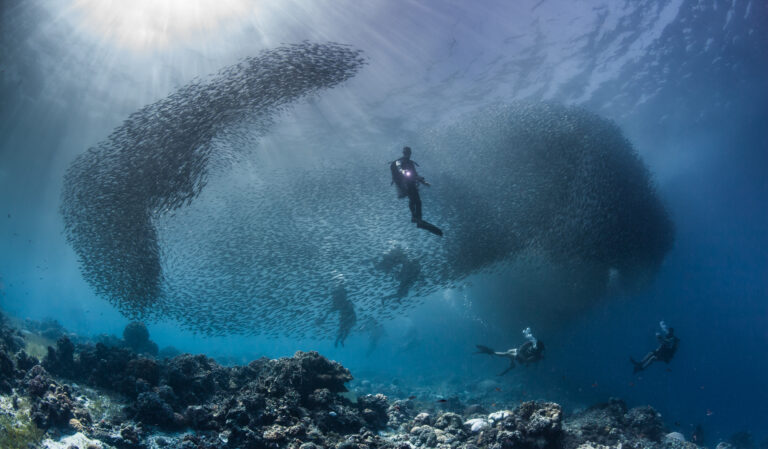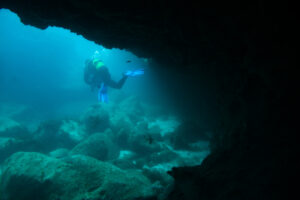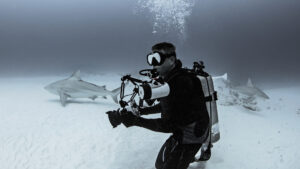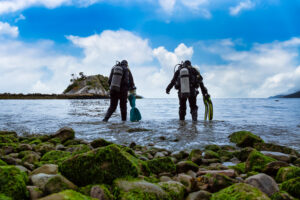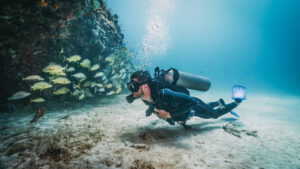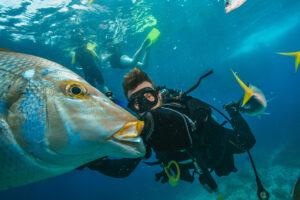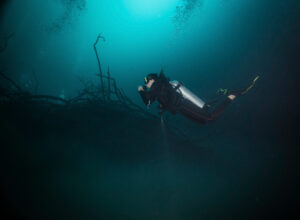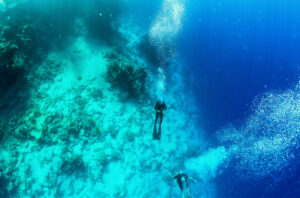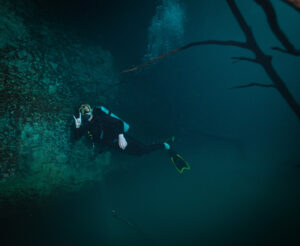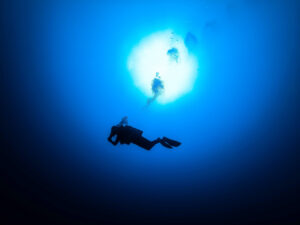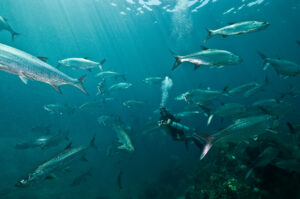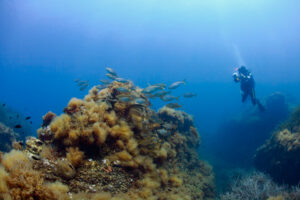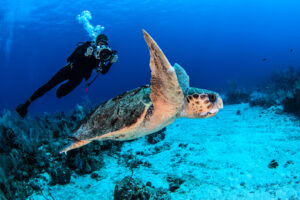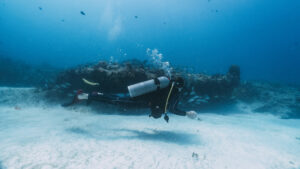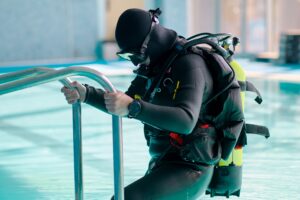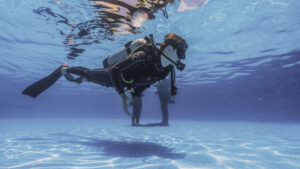What is Eddy when Scuba Diving?
An eddy is a circular movement of water, often formed on the side of a primary current, resulting in a localized whirlpool-like effect. This phenomenon typically occurs when the main flow of water encounters an obstruction, such as a projection or an opposing current. Eddies play a significant role in the scuba diving experience, as they can impact divers’ navigation, safety, and marine life observation. This comprehensive entry will explore the formation, characteristics, and implications of eddies in scuba diving.
Formation of Eddies
Eddies form when water in motion encounters resistance or a change in flow direction. When a primary current meets an obstacle, such as a rock or coral formation, the water is forced to change direction, resulting in the creation of a swirling motion. Similarly, when two opposing currents collide, their conflicting directions can cause the water to circulate in a circular pattern, creating an eddy.
Characteristics of Eddies
Eddies can vary in size, depth, and intensity depending on the factors that contribute to their formation. They can be as small as a few inches in diameter or as large as several feet across. The depth of an eddy can range from just below the water’s surface to several meters deep, while the velocity of the circular motion can range from a gentle swirl to a powerful vortex. Eddies can be either temporary, lasting only a few seconds, or more persistent, remaining in place for extended periods.
Impact on Divers’ Navigation
The presence of eddies can impact a scuba diver’s ability to navigate underwater. As eddies cause water to move in a circular motion, divers may find themselves pushed off course or disoriented by the change in water flow direction. To maintain accurate navigation, divers should remain aware of their surroundings and compensate for the effect of eddies on their movement.
Eddies and Diver Safety
Eddies can present both risks and benefits to scuba divers. In some cases, eddies can create hazardous conditions, such as strong currents that can sweep divers away from their intended path or trap them against underwater obstacles. Divers should remain vigilant and be prepared to adjust their dive plans to accommodate for the presence of eddies.
Conversely, eddies can also provide benefits to divers. For instance, an eddy may offer a respite from a strong current, allowing divers to rest or make adjustments to their equipment in a more stable environment. Additionally, eddies can sometimes create pockets of clear water, providing enhanced visibility for underwater photography or marine life observation.
Marine Life and Eddies
Eddies can have a profound impact on marine life, as they can influence the distribution and behavior of various organisms. Some species of fish and marine invertebrates, such as plankton, may congregate in eddies due to the concentration of nutrients and the protection offered by the swirling water. This can provide excellent opportunities for scuba divers to observe diverse and abundant marine life.
Furthermore, predatory species, such as sharks and barracudas, may be attracted to eddies due to the presence of prey. While this can offer unique opportunities for divers to observe these predators in their natural habitat, it is essential to exercise caution and maintain a safe distance to avoid potentially dangerous interactions.
Tips for Diving in Eddy Conditions
- Plan ahead: Before embarking on a dive, research the dive site and familiarize yourself with the possible presence of eddies. This knowledge will help you anticipate potential hazards and adjust your dive plan accordingly.
- Stay alert: Be aware of your surroundings and maintain a constant vigil for any changes in water flow or the formation of eddies. This will help you stay safe and navigate effectively throughout your dive.
- Use the buddy system: Diving with a partner is always a good practice, but it becomes even more critical in eddy conditions. A buddy can help you maintain your bearings, provide assistance in challenging currents, and offer support in case of emergencies.
- Maintain proper buoyancy: Good buoyancy control is crucial when navigating eddies. Proper buoyancy will allow you to maintain your position in the water column, avoid getting caught in strong currents, and reduce the risk of accidental contact with underwater structures or marine life.
- Adjust your dive plan: In the presence of eddies, you may need to modify your dive plan to account for the change in conditions. Be prepared to change your route, extend or shorten your dive time, or even abort the dive if necessary to ensure your safety.
- Respect marine life: As mentioned earlier, eddies can attract a variety of marine species, including predators. Always maintain a safe distance from marine life and avoid disturbing their natural behavior. Remember that you are a visitor in their environment, and it is crucial to respect their space.
- Seek local knowledge: If you are unfamiliar with a dive site, consult local dive operators or experienced divers who can provide valuable information on eddy conditions, potential hazards, and the best ways to navigate them. Local knowledge can greatly enhance your safety and enjoyment of a dive.
Eddies are an integral part of the underwater environment and can have a considerable impact on scuba diving experiences. Understanding their formation, characteristics, and implications is essential for divers to navigate safely and appreciate the unique opportunities they provide for marine life observation. By planning ahead, staying alert, and following best practices, divers can safely and effectively explore the fascinating underwater world in the presence of eddies.

